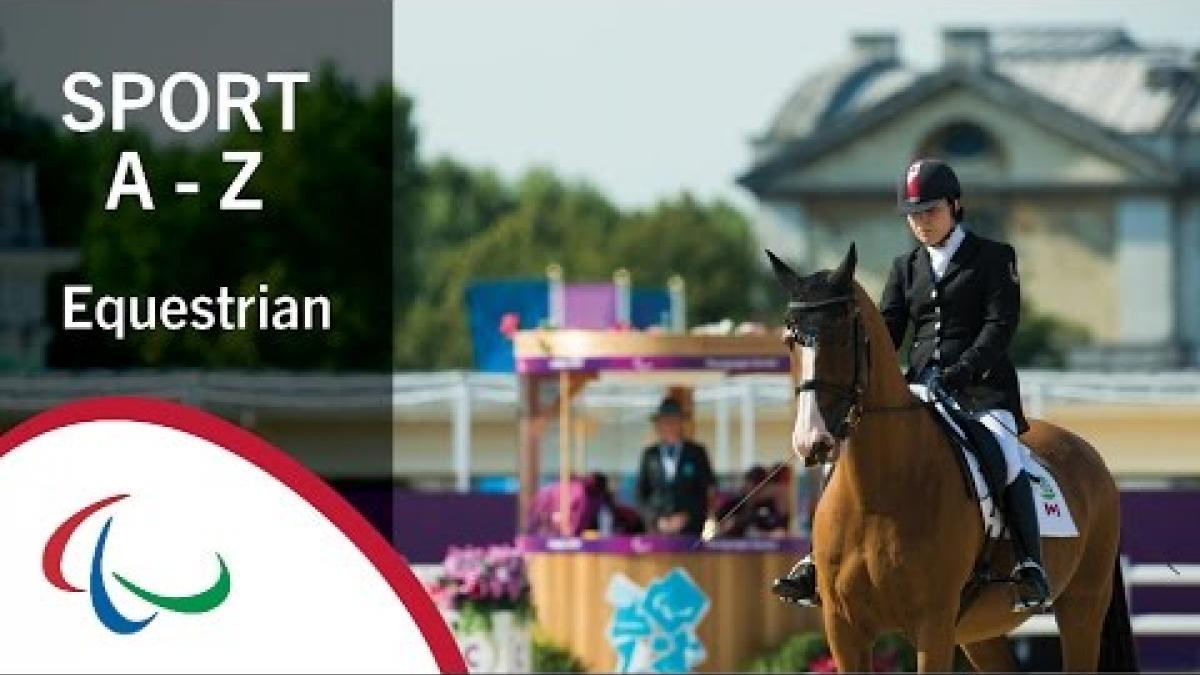Sport Week: Introduction to para-equestrian
Get to know how a rider and his/her horse connect to compete for Paralympic medals. 21 Mar 2016Editor’s note: Each sport on the Rio 2016 Paralympic programme will have a dedicated week of featured content published on paralympic.org. Every week a new sport will be featured and the series will run until September’s Games, helping the public understand more about the 22 sports being contested in Rio.
In para-equestrian, the rider must prompt his or her horse to perform movements – such as steps, trots and canters – and freestyle routines choreographed to music.
Rio 2016 marks the 20th anniversary of the introduction of para-equestrian into the Paralympic Games, where dressage events (team, individual and freestyle) will be contested.
The sport, which developed over the years out of various countries’ Riding for the Disabled organisations, mirrors the able-bodied dressage competition in its format and objectives.
The International Equestrian Federation (FEI) defines dressage as: "the highest expression of horse training in which horse and rider are expected to perform from memory a series of predetermined movements."
A more common explanation of the sport is that it is about the relationship between horse and human, and demonstrating that through movement around the competition arena.
Eleven gold medals will be up for grabs at Rio 2016 – an overall team medal and 10 from individual competitions in both the individual and freestyle tests across the five sport classes. (Check back at Paralympic.org this week for an article on classification in para-equestrian.)
How it works
Judges are spread across the arena and evaluate the precision of movements with a score from zero to one. The rider and horse with the highest score wins.
In the team contest, four riders comprise each team, with at least one grade Ia rider. Each rider in each grade performs a set test. The top three scores for each team across all the grades will form half of each team’s overall score. Team tests will be held on the first two days of competition at Rio.
The individual test sees riders in each grade perform a second routine, again with each rider performing the same test. Individual medals are awarded for the top three riders in each class, and each team member’s scores are added to their country’s team test score to determine the overall team winner.
All 11 medals events are mixed
Individual – grade 1a
Individual – grade 1b
Individual – grade II
Individual – grade III
Individual – grade IV
Freestyle – grade 1a
Freestyle – grade 1b
Freestyle – grade II
Freestyle – grade III
Freestyle – grade IV
Team
When to watch at the Games
The first medals will be awarded on 14 September, with the remaining individual medals and team title awarded on 15 September.
The arena will ring out with music on Friday 16 September when the freestyle event takes place. The riders who placed in the top third of the individual competition will get to perform their self-choreographed freestyle tests on what will doubtless be the busiest and most popular day of competition. All five freestyle medals will be awarded on that day bringing the competition to an end.
(More on the competition venue and schedule will also be discussed further later this week in the Sport Week series.)
Helpful Links

 Facebook
Facebook
 Instagram
Instagram
 Twitter
Twitter
 Youtube
Youtube
 TikTok
TikTok
 Newsletter Subscribe
Newsletter Subscribe








